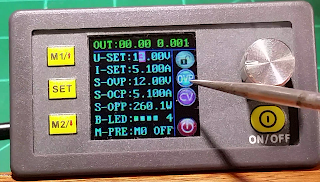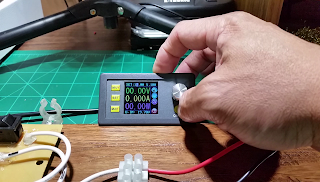Hello friends! Welcome to DougM65, thank you for taking the time to read my instructable. Today's instructable was made for the purpose of educating people who are interested in finding a programmable, compact and portable variable power source for your remote control "RC" hobby. In this instructable I will share what I found for this topic - all of which I have tested and verified myself.
A huge shout out and thank you goes out to the team from gearbest.com for sending me this nifty electronic device for review.
First, I needed to source some items to power the module and start testing. These are the items:
Power Source: HP AC/DC Laptop Power Adapter, Input: 100-240V, Output: 19V 3.95A
DIY power bar, electric wire, connectors, etc...
7mm brushed electric motor and propeller
3V bulb
12V pc computer fan
Diode (supplied) - needed for charging batteries.
This is my latest instructable. Below is the DP50V5A CV, CC Programmable Control Supply Power Module from gearbest.com. It's the smallest variable DC power supply I've ever worked with and it has a tremendous capacity to do many things. My estimates put this device on the top on my 'micro-to-go' list category. It's very compact with a full color LCD display. Here is a list of features:
Adjustable output voltage
Adjustable output current
S-OVP - Over voltage protection
S-OCP Over current protection
Light weight, portable
Applications:
This can be used with DC powered products, such as:
LED lights for a work bench
USB charger (Phones, batteries, etc. * note to use diode if charging a device *
External fan (cooling effect, fume extractor.)
USB-gadgets (ipod, ipad)
Technical Spec's:
Input voltage range: 6-55V
Output voltage range: 0V-50.00V
Output current: 0-5.000A
Output power range: 0-250W
Product Weight: 113g
Output voltage resolution: 0.01V
Output current resolution: 0.001A
Product Dimension: 79mmX43mmX48mm
Open size: 71mmX39mm
Output Voltage accuracy: +/- (0.5% + 1 digit)
Output Current accuracy: +/- (0.5% + 2 digit)
Note: Recommended that your input voltage is 1.1 times higher than the output voltage. Under large current instances an addition device might be needed to dissipate heat.
THE BUILD:
This is a photo build log of the DP50V5A. Typically I include text that walks through each step, but for this review I'll refer you to the VIDEOS page as that has a video review of the testing I did with these same pictures and a narration of the test. If you have any questions, feel free to send me a message via the contact page.
 Used 19V laptop adapter to power module. |  Stand-alone module Stand-alone module |
|---|---|
 Powered colored LCD Powered colored LCD |  Stand-alone colored LCD module Stand-alone colored LCD module |
 Input Voltage: U-IN: 19.69V Input Voltage: U-IN: 19.69V |  SET button SET button |



































































No comments:
Post a Comment
Note: Only a member of this blog may post a comment.